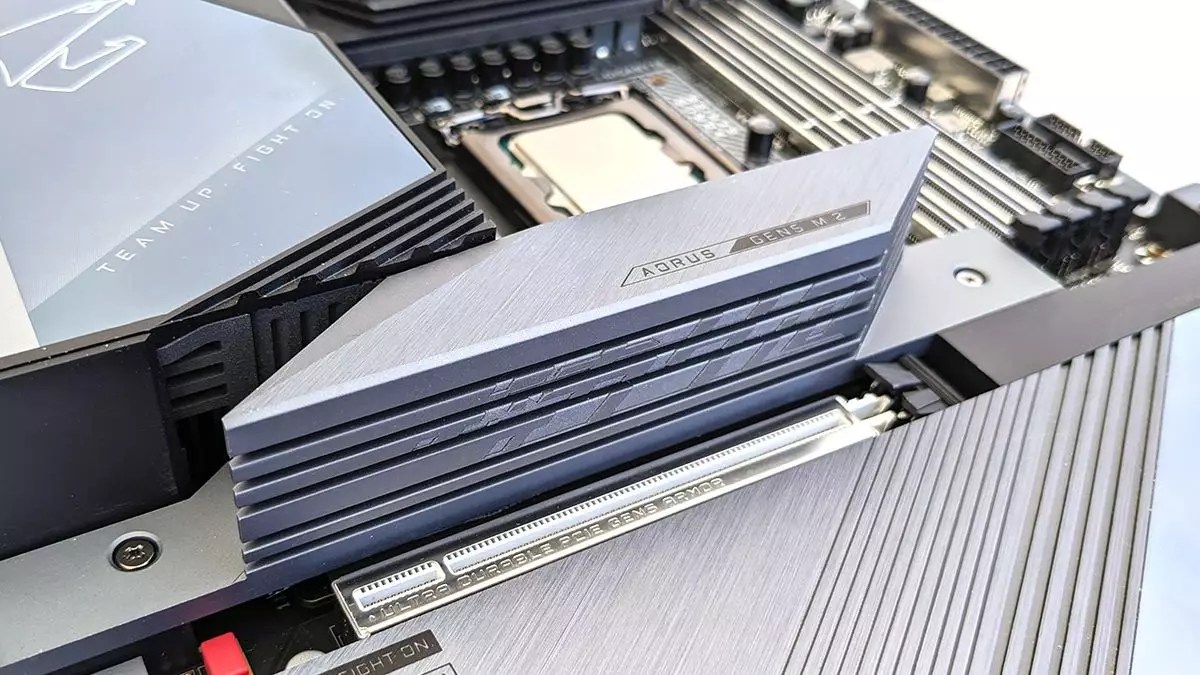One of the major concerns with current PCs is the excessive power consumption, closely followed by the heat generated by NVMe SSDs. The use of extensive metal coverings on motherboards or SSDs cooled by tower heatsinks with small fans is not the ideal scenario for many users. Despite the fact that Gen 5 x4 SSDs do not provide significant performance improvements, Intel has taken a step towards addressing these issues with the development of a bandwidth controller driver, particularly aimed at Linux users.
The new driver introduced by Intel aims to control thermal issues associated with high bandwidth PCIe devices by reducing PCIe link speed when required. Reports suggest that the driver will have the capability to lower the link width of PCIe Gen 6 devices. This means that a Gen 6 x4 drive could potentially reduce to x2 or x1 if the system detects excessively high temperatures. However, it is noted that such changes to link width are not possible with Gen 5 devices according to the changelog.
Concerns and Future Implications
While the driver itself is a step in the right direction, the fact that such measures are necessary raises concerns. Even with fast Gen 5 drives capable of speeds up to 14 GB/s, overheating can still lead to throttling if proper cooling is not in place. The anticipation of the cooling requirements for a top-spec Gen 6 drive is worrisome, with possibilities such as more AIOs with integrated M.2 cooling blocks. As of now, the driver is exclusive to Linux, leaving questions about its potential integration into the Windows ecosystem.
Shift Towards Lower Speed Drives
There is a suggestion towards moving away from typical x4 drives to x2 or x1 drives, especially with the introduction of Gen 6 devices. A Gen 6 x1 drive is still capable of transferring data at speeds up to 7GB/s, equivalent to a Gen 4 x4 drive at present. The reality is that most users will not require the extreme speeds of a Gen 6 x4 drive capable of transferring 28 GB/s sequentially unless in very specific scenarios that would necessitate multiple slots.
Amidst the race for larger numbers and impressive statistics, the essence of random performance and I/O seems to have been overlooked by manufacturers. It is crucial to understand that these aspects play a crucial role in determining the quality of an SSD, beyond just the easily digestible figures that are often highlighted.
Optimistic Outlook
Despite my personal concerns, the introduction of dynamic throttling not only for SSDs but potentially for all PCIe devices is a positive development. The prospect of saving a few watts here and there while maintaining lower temperatures is a welcome change. Additionally, the hope that this advancement could potentially lead to the elimination of noisy fans is a promising thought for the future of PC components.
The efforts made by Intel to address power consumption and heat generation in PCs are commendable. The introduction of a driver to control thermal issues in high bandwidth PCIe devices signifies a step towards more efficient and sustainable computing. As technology continues to evolve, it is essential for manufacturers to prioritize functionality and performance over superficial numbers, ensuring that users receive the best possible experience from their devices.


Leave a Reply